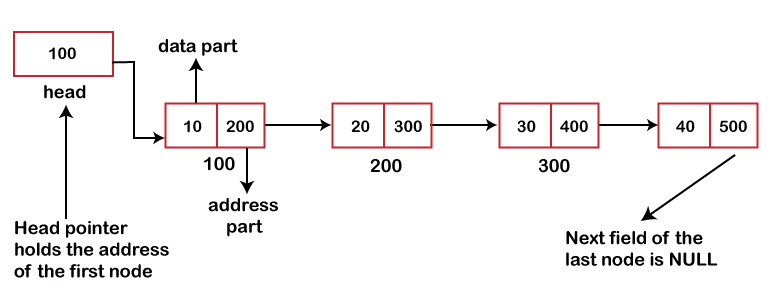Singly Linked List vs Doubly Linked ListBefore looking at the differences between the singly linked list and doubly linked list, we first understand what is singly linked list and doubly linked list separately. What is a singly linked list?A singly linked list can be simply called a linked list. A singly linked list is a list that consists of a collection of nodes, and each node has two parts; one part is the data part, and another part is the address. The singly linked can also be called a chain as each node refers to another node through its address part. We can perform various operations on a singly linked list like insertion, deletion, and traversing. 
What is a doubly-linked list?A doubly linked list is another type of the linked list. It is called a doubly linked list because it contains two addresses while a singly linked list contains a single address. It is a list that has total three parts, one is a data part, and others two are the pointers, i.e., previous and next. The previous pointer holds the address of the previous node, and the next pointer holds the address of the next node. Therefore, we can say that list has two references, i.e., forward and backward reference to traverse in either direction. 
We can also perform various operations on a doubly-linked list like insertion, deletion, and traversing. Differences between the singly-linked list and doubly linked list.
The differences between the singly-linked list and doubly linked list are given below:
The singly-linked is a linear data structure that consists of a collection of nodes in which one node consists of two parts, i.e., one is the data part, and another one is the address part. In contrast, a doubly-linked list is also a linear data structure in which the node consists of three parts, i.e., one is the data part, and the other two are the address parts.
As we know that in a singly linked list, a node contains the address of the next node, so the elements can be traversed in only one direction, i.e., forward direction. In contrast, in a doubly-linked list, the node contains two pointers (previous pointer and next pointer) that hold the address of the next node and the address of the previous node, respectively so elements can be traversed in both directions.
The singly linked list occupies less memory space as it contains a single address. We know that the pointer variable stores the address, and the pointer variable occupies 4 bytes; therefore, the memory space occupied by the pointer variable in the singly linked list is also 4 bytes. The doubly linked list holds two addresses in a node, one is of the next node and the other one is of the previous node; therefore, the space occupied by the two pointer variables is 8 bytes.
The insertion and deletion in a singly-linked list are less complex than a doubly linked list. If we insert an element in a singly linked list then we need to update the address of only next node. On the other hand, in the doubly linked list, we need to update the address of both the next and the previous node. Let's look at the differences in a tabular form.
Next TopicBinary tree vs Binary Search tree
|
 For Videos Join Our Youtube Channel: Join Now
For Videos Join Our Youtube Channel: Join Now
Feedback
- Send your Feedback to [email protected]
Help Others, Please Share










